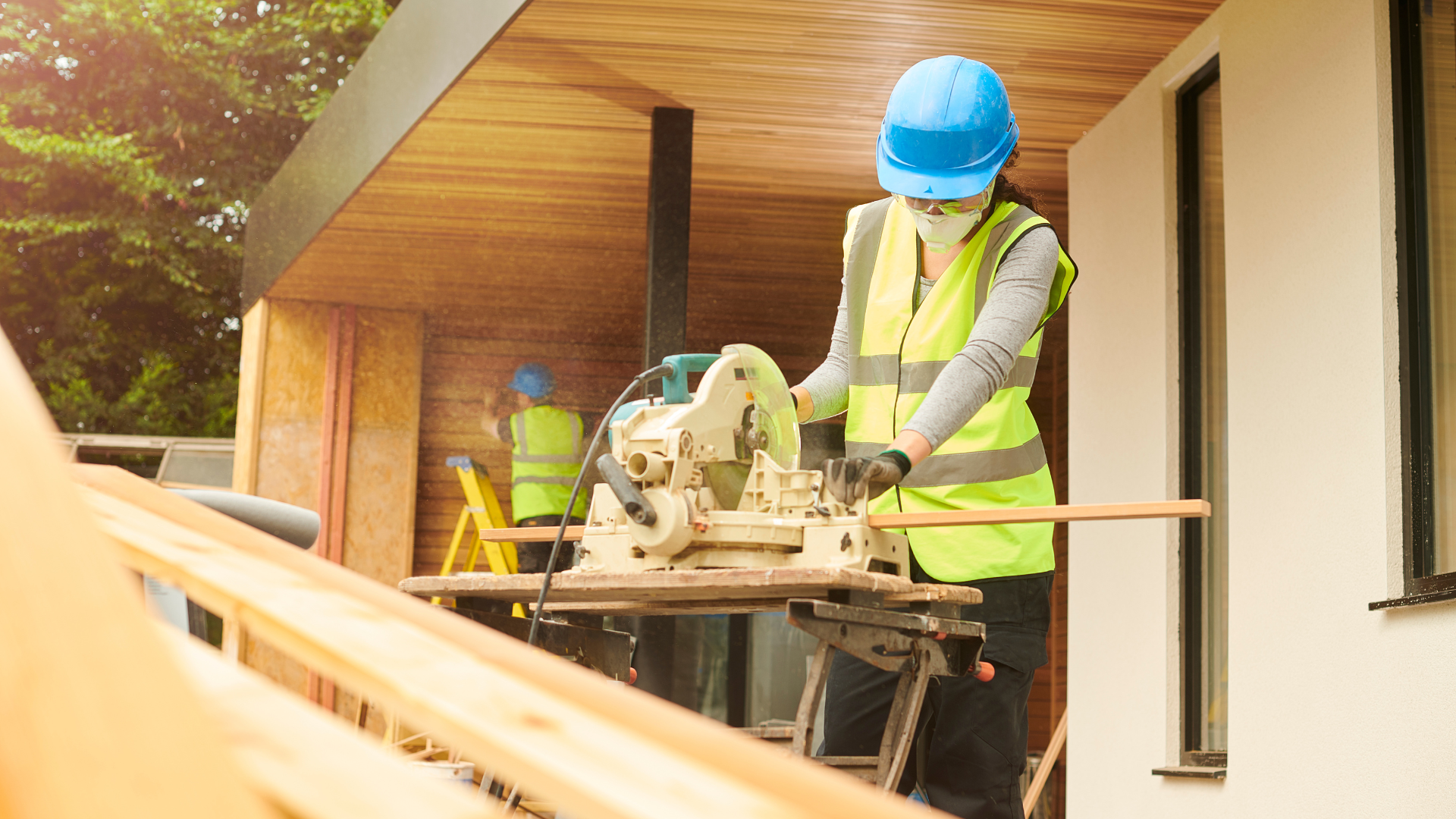Have you ever admired the sleek facade of a modern building? Or wondered how historical structures have maintained their charm over the years? External cladding is a significant part of the answer.
This blog will explore its fundamentals, purpose, and evolution over time. We’ll also uncover the myriad benefits it offers, so keep reading!
External Cladding Explained
External cladding refers to the covering installed on a building’s exterior surface. Also known as exterior cladding, its primary purpose in construction is two-fold:
- safeguard the structure from external elements such as rain, wind, and harsh weather
- enhance its aesthetic appeal
Acting as a shield, cladding prevents moisture from penetrating the walls. This protection reduces the risk of structural damage and mould formation. On top of that, it serves as an insulator, contributing to the building’s energy efficiency.
The historical significance of cladding in architecture dates back centuries. Early civilisations used natural materials, e.g., wood and clay, to clad their buildings. The use of cladding continued through different architectural eras. Today, with the incorporation of more sophisticated materials and designs.
As modern construction practices emerged, cladding evolved significantly. Advancements in technology and materials also introduced a wide array of options. Modern cladding solutions prioritise durability and functionality and emphasise sustainable practices. This evolution enabled cladding to adapt to the demands of today’s construction industry.
Benefits of External Cladding
Exterior timber cladding provides excellent weather protection. It acts as a barrier against rain, wind, and UV rays, enhancing the building’s structural integrity. As mentioned, cladding also serves as a reliable insulation. Meaning it helps regulate indoor temperatures and reduce heating and cooling costs. Most importantly, it improves energy efficiency.
Beyond its functional benefits, cladding enhances the appearance of buildings. It comes in a wide range of materials, colours, and textures available. This allows architects and designers to create visually striking facades. Even better, it can add character and charm to both modern and traditional buildings.
Furthermore, the inclusion of high-quality cladding can significantly boost a property’s value. Prospective buyers are often attracted to buildings with well-maintained and visually appealing exteriors.
Overall, cladding enhances curb appeal and protects the structure from environmental damage. This makes it an attractive and potentially lucrative investment in the long run.
Types of External Cladding Materials
Below are the common types of materials used in external cladding:
1. Vinyl cladding
Vinyl cladding is popular due to its affordability, low maintenance requirements, and versatility. It is made from polyvinyl chloride (PVC) and comes in a wide range of colours and textures.
Vinyl cladding offers excellent resistance to fading, cracking, and pests. This makes it a durable option for contemporary and modern architectural styles.
2. Wood cladding
Wood cladding exudes a timeless and natural appeal. It is available in different species, like cedar, redwood, and wood pine. This cladding type also provides good insulation and breathability, regulating indoor humidity levels. Its suitability for architectural styles spans from rustic and traditional to modern designs.
3. Fibre cement cladding
Fibre cement cladding consists of a mixture of cement, sand, and cellulose fibres. This material is known for its durability, resistance to fire, insects, and rot. Its low-maintenance properties are also a big plus!
Fibre cement cladding can mimic the appearance of wood, stucco, or masonry. This makes it suitable for architectural styles seeking a cost-effective and robust solution.
4. Metal cladding (aluminium, steel, zinc, etc.)
Metal cladding offers a sleek and contemporary appearance. Aluminium cladding is lightweight, corrosion-resistant, and can be easily shaped. Meanwhile, steel provides exceptional strength and durability. Zinc cladding, known for its self-healing properties, develops a beautiful patina over time.
Metal cladding is favoured for its longevity and low maintenance. Its ability to contribute to energy-efficient designs makes it worthwhile.
5. Brick and stone cladding
These cladding types are classic choices favoured for their timeless elegance and durability. Brick cladding comes in various colours and patterns. In contrast, stone cladding offers a natural and rugged texture. Both materials are weather-resistant and well-suited for traditional, colonial, and rustic architectural styles.
Factors to Consider When Choosing External Cladding
Selecting the right cladding material involves several important considerations:
Climate and weather conditions
The local climate plays a significant role in determining the suitable cladding material. For areas with harsh weather conditions, fibre cement or metal cladding is ideal. Both offer superior durability and weather resistance. Options like wood or vinyl cladding can be more suitable in milder climates.
Maintenance requirements
Different cladding materials vary in their maintenance needs. Some materials, like vinyl and metal cladding, require minimal upkeep. Meanwhile, wood and stone cladding may demand more regular maintenance for longevity. This includes sealing, staining, or repainting.
Budget constraints
The budget available for the cladding project is a crucial factor. Materials like vinyl and fibre cement are cost-effective. Meanwhile, metal or stone cladding can be more expensive. Balance the desired aesthetics with your budget to make a practical choice.
Aesthetic preferences
The cladding material significantly influences the building’s appearance and style. Consider the architectural design and aesthetic preferences when choosing the cladding material.
Wood cladding offers a natural and warm feel. Metal cladding adds a modern and sleek touch. Whereas brick and stone cladding exudes classic elegance. Finding a material that aligns with your aesthetic to create a cohesive exterior.
Round-up
External cladding proves to be an indispensable aspect of modern construction. As a protective shield, it guards buildings against the elements. This enhances their longevity and reduces maintenance costs. Moreover, the diverse range of cladding materials allows for creativity and flexibility.
Take shed cladding, for instance, which provides weather protection, insulation, and durability. For your cladding needs, visit TimberX or get a quote; our team will happily answer your queries.
